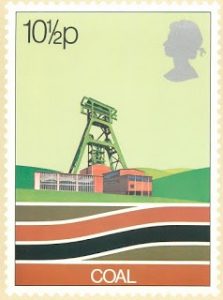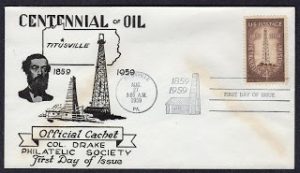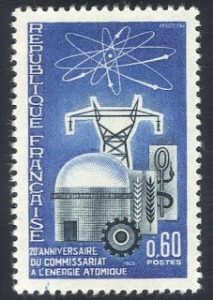Sacrifice by whales
Causes of imminent climate disaster and options for a Green future
Coal
Geologists generally agree that the world’s coal deposits were laid down during the Carboniferous period, a time between 300 and 360 million years ago, about 75 million years or so before the first dinosaurs’ evolution.
Human use of coal is traced to ancient China, with a coal mine known to exist over 3,000 years ago. By 200 BC, the Chinese were already using coal for heat. As a trading commodity, and by 120 BC, coal provided the heat necessary to support China’s flourishing metallurgy industry.
In Britain, the Romans exploited all significant coalfields (except for North and South Staffordshire) by the late 2nd century AD. The earliest known use of coal in the Americas was by the Aztecs (in Mexico, from 1300 AD to 1521 AD), who used coal to make ornaments.
As humans explored new worlds, they migrated further from known lands. As global populations grew, coal took on even greater importance. In the 1700s, coal provided the fuel that heated the homes and cooked the meals of the hundreds of thousands of Englishmen who lived in the cities.
At the time, London already had more than half a million people. This expanding city alone consumed more than a thousand tonnes of coal in a day. But the shallow seams of coal at the British mines were being quickly exhausted. Miners were having to go deeper.
Unfortunately, the more the mine shafts penetrated deeper into the ground, the more prone to flooding.

Innovative miners developed crude contraptions which harnessed horses at the surface to draw water out of the flooding mines. But these systems were inefficient, unreliable and relatively expensive to operate. Mine after mine lost productivity. Some even shut down. Britain was desperate for a solution.
The First Industrial Revolution
In 1698, Thomas Savery developed a steam-powered water pump for use in mines. His small pump units were reasonably effective, but the larger models were unreliable, prone to boiler malfunction and sometimes even spectacular explosions.
The first commercially successful engine that could transmit continuous power to the machine (like a pump) was the atmospheric engine invented by Thomas Newcomen circa 1712.
On the site of England’s greatest coalfield, the Coneygree Coal Works in Staffordshire, Newcomen successfully tested a tool that would keep mines safe and enable coal to be mined deeper.
Over the next 20 years, more than a hundred Newcomen engines were built. It allowed many mines in Britain and Continental Europe to deliver vast quantities of coal to fuel the start of an industrial revolution.
Indeed, many believe that at that moment in Staffordshire, when his first atmospheric engine successfully started up, Newcomen not only enhanced the wealth of several investors. He actually changed the destiny of humankind.
Over the decades that followed, improvements were made to the Newcomen engine. But the next major step occurred when a Scottish Instrument maker, working at the University of Glasgow and assigned the job of repairing a model Newcomen engine, noticed its inefficiency. This Scottish Instrument Maker was James Watt (who later lent his surname to the SI unit of power – the Watt).
Watt’s improvements to the Newcomen engine were somewhat sporadically executed. Still, from 1763 to 1775, with support from Mathew Boulton, Watt introduced changes that substantially saved fuel consumption in the generation of power compared with earlier designs.

The new Boulton – Watt design was commercially introduced in 1776. The first unit being sold to the Carron Company Ironworks (a manufacturer of canons) located on the banks of the River Carron, near Falkirk, in Scotland. The introduction of this superior steam engine heralded the commencement of a particular period.
Future historians would later call these times the First Industrial Revolution.
By the mid-1780s, the Boulton – Watt machine was being integrated to power ships, but there was more progress to follow. In 1802, Richard Trevithick, an inventor and mining engineer from Cornwall (in the southwest of England), patented a “high-pressure engine” and created the first steam-powered locomotive on rails.
Initially, goods would be transported across continents in freight trains drawn by coal-fired, steam-powered locomotives. Still, soon passenger traffic was also to boom.
The cyclical huff and puff rhythms conjured by these sleek, steely hearth-throbs, painted in dashingly bright colours, only added to the romance of travel. Tourism soon became a viable and popular commercial activity.



Steamboats began ferrying tourists along the Rhine in 1827. The first-ever economically successful “package holiday”, created in 1841 by Englishman Thomas Cook, enabled some 500 teetotal campaigners to travel by train from Leicester to Loughborough to attend a temperance society rally. The “all-inclusive” package incorporated brass music entertainment, sandwiches and tea, as well as talks on the dangers of alcohol!
With the transport revolution that was taking place, an increasing number of destinations could be reached cheaply by rail by the latter part of the 19th century. In fact, it became a mark of social standing for the middle classes to go on holiday once a year.
By 1870, the Rhine was the most frequented travel destination in the world. Just over a decade later, in 1883, the elite would also luxuriously ride the exotic “Orient Express” (initially from Paris to Vienna, and then later, to Istanbul).
Coal did not only fuel the steam engines that drove trains, powered ships or worked the pumps at coal mines. Other commercially viable opportunities also emerged as a result of coal deposits.
In 1847, James Young, a Scottish chemist, turned his attention to a natural oil-type seepage at the Riddings Colliery in Derbyshire in England. Young’s experimentation allowed him to distil a light, thin oil for use as lamp oil whilst also obtaining a thicker oil suitable for lubricating machinery.
These new oils came from coal shales and were commercially successful. But the supply of such oils from coal mines soon began to fall and eventually was exhausted in 1851.
Shortly afterwards, Thomas Edison started to commercialise the supply of electricity. In June 1882, the world’s first coal-fired public power station, the Edison Electric Light Station, was built in London, a project of Edison and his business partner, Edward Johnson.

In September the same year, Edison established the Pearl Street Station in New York, providing electric lighting in the lower Manhattan Island area. The station ran until destroyed by fire in 1890.
The station used reciprocating steam engines to turn direct-current (DC) generators. Because of the limitations of DC distribution, the serviced area was small.
The Newcomen engine had made vast quantities of coal accessible by preventing the flooding of deep coal mines. Once vast amounts of this carbon-based fuel became available, energy – a key component of economic progress – was present and unknowingly at that time, so too was the pathway to irreversible environmental damage.
Damage was gradually occurring in two areas – in the atmosphere above and in the deep, unseen depths of the remote oceans of the planet.
Whale Oil
In the Industrial Revolution, oil which was required as a lubricant for reducing friction in moving machines, or was being used as an illuminant, was sourced from the coal shales. But there was another source – whales.
Initial records show whales as land-dwelling, hoofed mammals that first appeared some 50 million years ago. Over several million years, they developed fins, became marine creatures and evolved substantially in size to become the majestic rulers of our oceans.
The Antarctic Blue Whale is currently the largest animal on the planet, weighing up to 180,000 kg, equivalent to approximately thirty African elephants. These magnificent creatures, reaching up to 30 meters in length, have hearts the size of a small car.
As we look back on the history of our planet, to the era of the dinosaurs before the evolution of the whale, we learn that the Argentinosaurus, with an estimated weight of nearly 80,000 kg, was the heaviest dinosaur. This is equivalent to 17 large African elephants.
Thus, the Antarctic Blue Whale of today is even larger than the most massive of the dinosaurs of yesteryear.
Whales have been hunted by humans for centuries all across the planet. Historical records suggest that the Norwegians were among the first to hunt for these marine creatures as early as 4,000 years ago.
Seafaring communities as varied as the Inuit (who hunted in the Arctic Ocean), Basque (Atlantic), and Japanese (Pacific) relied on whales to make products of economic value. The traditional practice of whaling was also an ingrained part of their individual cultural identities.

During Medieval Times, between 500 AD and 1500 AD, whaling gained popularity throughout Northern Europe. Nearly every part of a whale had some use.
Whale oil was used for oil lamps and baleen (sometimes called whalebone) to construct corsets and hoop skirts (female attire). Both items were valuable commodities. Whales were also exploited to produce a variety of other goods and materials, including soap, perfume, clothing, fishing hooks and whale meat.
With the advent of the Industrial Revolution in Western Europe and in the United States from the 18th century, the demand for whale oil began to significantly impact global whale populations.
As professionally-manned factories replaced community-centred cottage industries and mass production substituted handicrafts, friction-reducing lubricants were always in demand to ensure the smooth operations of the noisy machines that lined busy (and often crowded) factory floors.
As urban populations and mechanisation grew and with the electric bulb only being invented in 1879, even more whale oil was required as an illuminant to light homes and brightened dark streets and alleyways.
Whaling soon spread from Europe to the United States, and this activity hit its peak in the mid-1800s. New technologies, including gun-loaded harpoons and steamships, enabled whalers worldwide to be even more efficient.
Based on the East Coast of the United States, the American whaling fleet operated hundreds of ships in the South Atlantic, Pacific, and Indian Oceans. Whaling was a multi-million dollar industry.
Some analysts estimate that more whales were hunted in the early 1900s than in the previous four centuries combined. By the mid-20th century, most species of the large whale were being rapidly pushed toward extinction.

In fact, it was the discovery of “black gold” – crude oil, in large volumes in the United States that offered alternatives to whale oil and resulted in the effective end to large scale commercial hunting of whales.
In the early 1970s, the United States listed eight whales as endangered species whilst officially outlawing whaling in 1971.
By then, the scale of the impact on the biodiversity of our planet caused Philip J. Clapham and Leila T. Hatch of the National Oceanic and Atmospheric Administration to claim in 2000: “The commercial hunting of whales in the 20th century represents what was arguably – in terms of sheer biomass – the greatest wildlife exploitation episode in human history.”
Black Gold – Crude Oil
To understand some of the first uses of crude oil, we go back in history to around 4000 BC. Then, in Mesopotamia (present-day Iraq and some areas of Iran), oil that naturally seeped to the surface to form bitumen – a tarry crude – was primarily used as a sealant for boats.
It is also believed that the ancient Egyptians used it for embalming. The walls of Babylon and the famed pyramids were held together with it. Oil in ancient times was generally used close to where it was found, seeping through natural cracks in the Earth’s surface.
Before the 1850s, oil was hardly considered a resource. In fact, it was perceived as a nuisance. Drillers seeking underground saltwater deposits to distil into salt were sometimes confronted by the presence of “rock oil”, which had no known application.
What turned oil from a nuisance to a resource was the scientific work of Benjamin Silliman Jr.
In the 1850s, the market for light-producing liquid fuels was dominated by coal oil and an increasingly inadequate supply of whale oil. George Bissell, a New York lawyer, his partner, Jonathan Eveleth, a lawyer, and James Townsend, a banker from Connecticut, though there was a possibility that the crude “rock oil” nuisance had been repeatedly occurring in Pennsylvania could be used as an illuminant.
Bissell and Eveleth realised that the oil was flammable and were convinced there was a large commercial opportunity to be developed in mass-producing rock oil to be marketed as a substitute for lamp fuel.
To progress their idea, they sought a well-respected scientist to assess their hypothesis and validate whether rock oil could be used in such a manner. They found Benjamin Silliman Jr., a professor from Yale University.
In 1855, Silliman Jr. assessed the hypothesis of Bissell and Eveleth and crafted a report (for which he charged US$ 526.08) that contained his analysis. The report covered the subject of Pennsylvania rock oil and its potential utility as an illuminant. Silliman Jr. concluded his report by stating that petroleum is “a raw material from which … they may manufacture a very valuable product.”

The content of this report convinced investors to back Bissell and Eveleth. It thus was created the “Pennsylvania Rock Oil Company” (later renamed the “Seneca Oil Company”).
Drilling of the well in search of petroleum was left to Edwin Drake. He, after several setbacks, discovered oil in the scenic area of Titusville, Pennsylvania on Aug 27, 1859.
There, and then commenced an activity that would become the currency of political and economic power for the next 160 years. It would be an industry that would be at the core of creating some of the richest nations and largest commercial corporations. It would also be the cause of wars.
As for George Bissell, he would become known as the “Father of the Petroleum Industry”.
Winston Churchill and the Creation of BP
“HMS Spiteful” was a naval torpedo boat destroyer built for the British Royal Navy and launched in 1899. Specified to steam at 30 knots, in 1904, HMS Spiteful became the first naval warship to be powered solely using fuel oil.
Tests were conducted by the Royal Navy in that year, comparing her performance using oil directly with a similar ship using coal. This experiment proved that burning oil offered significant advantages, demonstrating that oil allowed more excellent acceleration, speedier ships and delivered benefits in the fleet’s operations and manning.
Fuel-powered vessels could also be refilled at sea, thus providing a greater radius of action. Oil also significantly reduced the stress and exhaustion levels of the sailors and the general discomfort that went with coaling. A further advantage was that oil was less bulky than coal, allowing warships to carry more firepower on board. Thus, qualitatively and quantitatively, oil provided superior performance for less size and cost. With the support, influence and enthusiasm of a young Winston Churchill (who was appointed the First Lord of the Admiralty by then British Prime Minister, H.H. Asquith in 1911), the British Royal Navy commenced programme s from 1912 to 1914 to convert five of its ships to oil-powered battleships.

To ensure security of supply of the fuel, an Oil Bill, introduced in the British Parliament by Churchill on June 14, 1914, called for the investment of STG 2.2 million pounds by his government for a 51 percent ownership of the Anglo-Persian Oil Company. The deal provided the British government with a large and assured supply of oil while providing Anglo-Persian with much-needed capital and a secure market.
Eleven days after Churchill’s Oil Bill, on June 28th, 1914, Archduke Franz Ferdinand of Austria was assassinated, leading directly to the outbreak of World War I.
As for the Anglo-Persian Oil Company, it would become one of the antecedents of BP, eventually a corporation that would become one of the oil supermajors.
Today, oil and gas, together with coal provide the planet with about 80 percent of its energy requirement. According to market research by IBISWorld, a leading business intelligence firm, total revenues for the global oil and gas exploration and production sector in 2019 amounted to approximately US$3.3 trillion.
As the 2019 global aggregate Gross Domestic Product has been estimated to be about US$86 trillion, the oil and gas exploration and production sector alone makes up around 3.8 per cent of the global economy. Unfortunately, fossil fuels are also responsible for the greenhouse emissions that are at the core of a climate emergency that, if ignored, could ultimately lead to our own extinction as a species.
How did this happen?
Chasing the Greenback
The story that unfolds to where we are today starts with the Industrial Revolution. Once it got underway, the eventual destination was almost pre-set. Small scale agriculture and the cottage industries founded on handicrafts gave way to mechanised farming and mass production.
The American Civil War (1861 – 1865) and World War I (1914 – 1918) were further catalysts of innovation and demand. New forms of weaponry were developed, but novel techniques extended further than those deployed at the mines and factories.
New treatments to extend the longevity of human life were also tested and implemented. Sir Joseph Lister introduced antiseptic surgery at the Royal Infirmary in Glasgow, Scotland, in 1867.
This was not a unique event. By 1928, progress was such that Sir Alexander Fleming, a Scottish physician and microbiologist, discovered the world’s first broadly effective antibiotic substance. He named it “penicillin”, and which has been described as the “single greatest victory ever achieved over disease”.

Higher levels of produced goods were being delivered to domestic markets. Demand also originated from the colonies and territories connected by air, sea, and land transport. Growing levels of trade and commerce resulted in increasing levels of wealth.
The spiral of progress was further enhanced as more medical solutions were developed to fight disease. Populations grew, underpinned by an ever-increasing addiction for greater accessibility to energy.
Five datasets plot the journey. They are all inter-related and are shown below:


The greenhouse gas emission levels measured today are the outcome of our curiosity and a determined chase for increasing levels of wealth, improved standards of living and a quest for convenience and efficiency – the core ideas of a global capitalist orientated community.
We have discovered, and extracted carbon-based elements and compounds from the depths of the Earth found applications for them that enhance our lifestyles. We exhausted (and continue to exhaust) toxic emissions into the atmosphere in the name of progress.
Clearly, these lifestyle improvements have been at a cost, with the environment (from the emissions and biodiversity standpoints) on the frontline of the damage being done.
Chasing a Green World: What’s Next?
At the 2015 United Nations Climate Change Conference, COP 21, the Paris Agreement was negotiated and agreed upon. It took effect on April 22, 2016 (Earth Day), when 174 countries signed the agreement in New York and began adopting and ratifying its terms and targets within their own legal systems.
Whilst clear targets have been set (effectively, Nett Zero emissions by 2050), the route to this outcome remains vague. Solar and wind coupled with a general strategy of investment and innovation seem to be part of the plan.
A head-on onslaught via the media, the courtroom (Milieudefensie, the Dutch arm of Friends of the Earth versus Shell), and the boardroom (Engine No.1 versus Exxonmobil) on those involved in the production of fossil fuels also seems to be on the agenda of public pressure groups.

What is the result? Is the strategy working?
The facts are that oil and gas prices are increasing. There is also currently a shortage of the Rare Earth metals required to manufacture solar panels, semiconductors and storage batteries.
Solar and wind are subject to intermittency issues, i.e. the wind is not always blowing, and the sun is not always shining. Large scale, affordable storage is not yet a reality.
With financial solutions shying away from supporting investment in fossil fuel development projects and equity markets also keeping a safe distance from oil and gas companies, only a depressed level of capital is being expended in this area.
With a reducing level of investment being made in the oil and gas sector, and no serious alternatives in the renewables space being found urgently, oil and gas prices will track higher. Energy supply may once again be the subject of wars, and those graphs, presented in the various graphs of this post, may start to veer downwards.
The Nuclear Option
No politician who aspires to an extended-term in public office would wish to utter words about implementing nuclear energy. But as time runs out and the climate emergency starts morphing into a full-scale climate disaster.
As electrical “brown-outs” take effect in a green world, the nuclear option may emerge as the unpopular choice for deployment as the primary global energy backbone. Initially, it will also likely be supported by natural gas for several reasons.
Firstly, natural gas, for many decades so under-rated, is the cleanest amongst fossil fuels. Secondly, it is the raw material used in producing plastic and other petrochemicals, practically essential in daily life.
As a follow on, the smart money will likely support methods to safely reprocess nuclear waste, recycle plastic and capture carbon emissions.

Hydrogen will eventually leap-frog natural gas as a secondary energy source. It will gradually ascend in importance as a component of the energy mix when the requisite supply and delivery infrastructure is constructed.
Energy storage systems, a key enabler for solar and wind solutions to practically become viable will require a paradigm shift in technological approach.
Their reliance on Rare Earth metals in a significant way will only result in a negative impact on the environment. Sadly, more of the biodiversity of our planet will be lost if this pathway is pursued.
In the meantime, the transition to a green world must be managed with science, logic and care. Long term thought leadership and conviction will be required, whilst short-term political agendas will only result in a waste of scarce resources.
Nationalism, emotion and profit, as the drivers of the energy transition, will result in a lop-sided distribution of resources and investment. The outcome will be an unsatisfactory, diverging disparity between the “haves” and the “have-nots”.
Action is required, but an energy transition is going to be extremely expensive. Thus, it is more important to do it right than to do something fast.
Players in the financial sector also need to be cautious as they consider equity and debt positions in the fossil fuel sector. Hasty withdrawal will only see them as one of the primary contributors to an unstable energy supply environment. Volatility in energy supply is, in the long run, not the desired outcome for any type of sustainable economic activity.
After almost two years of a global medical pandemic, stability is desperately required.
As we look forward, we should never forget the sacrifice made by those magnificent maritime mammals – the whales. Humankind hunted them in the most remote oceans of the world in search of progress and profit. In the process, we harmed the delicate balance of biodiversity found in our environment.
Let us not trek the same path again. This time, let it be humankind that makes the sacrifices, invoking lifestyle changes that reduce our individual carbon footprints.

Dr Kenneth Pereira, the Managing Director of Hibiscus Petroleum, is an avid stamp collector. The stamps shown here are from his private collection. You can follow his stories on www.drkenp.com








